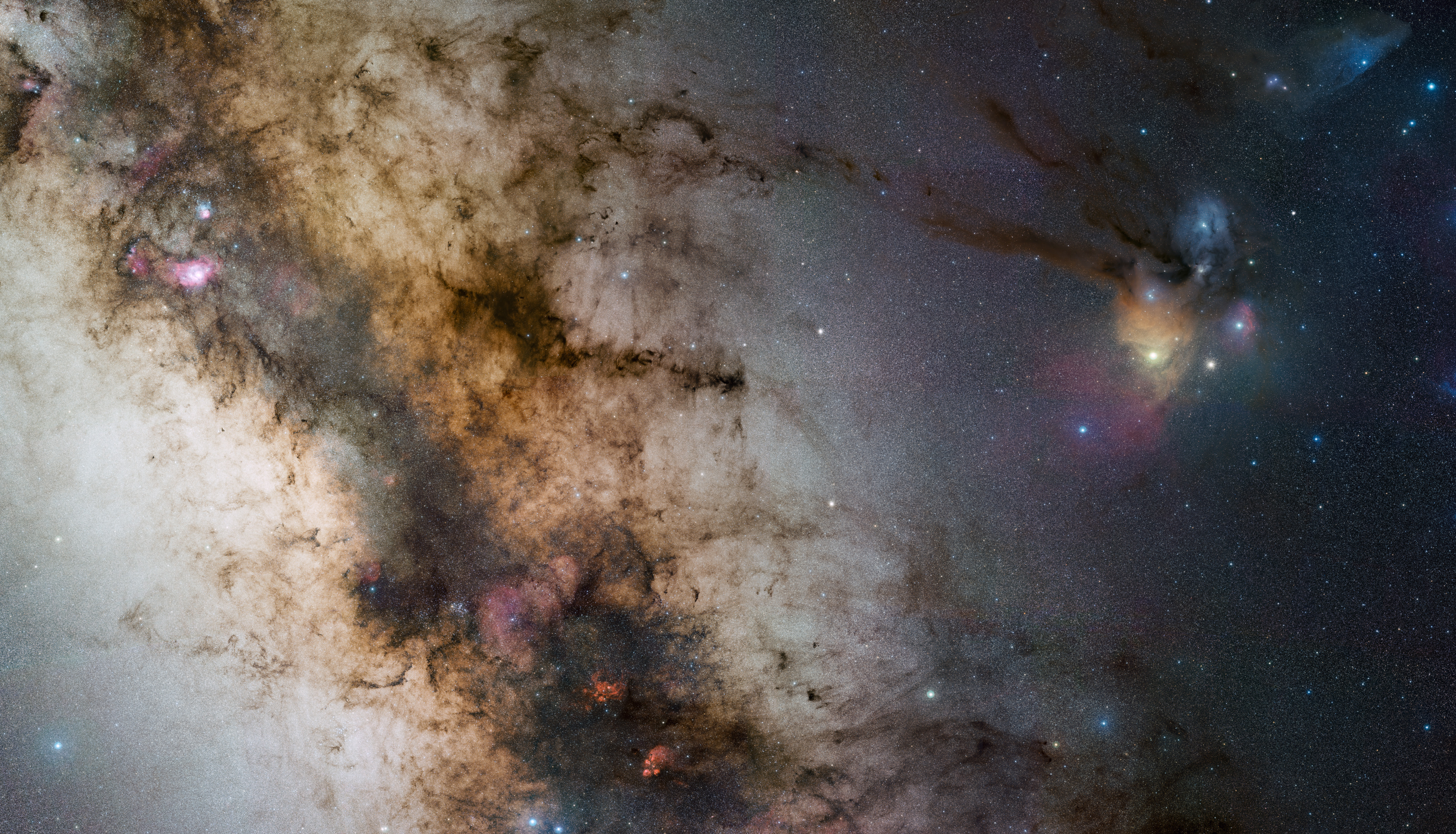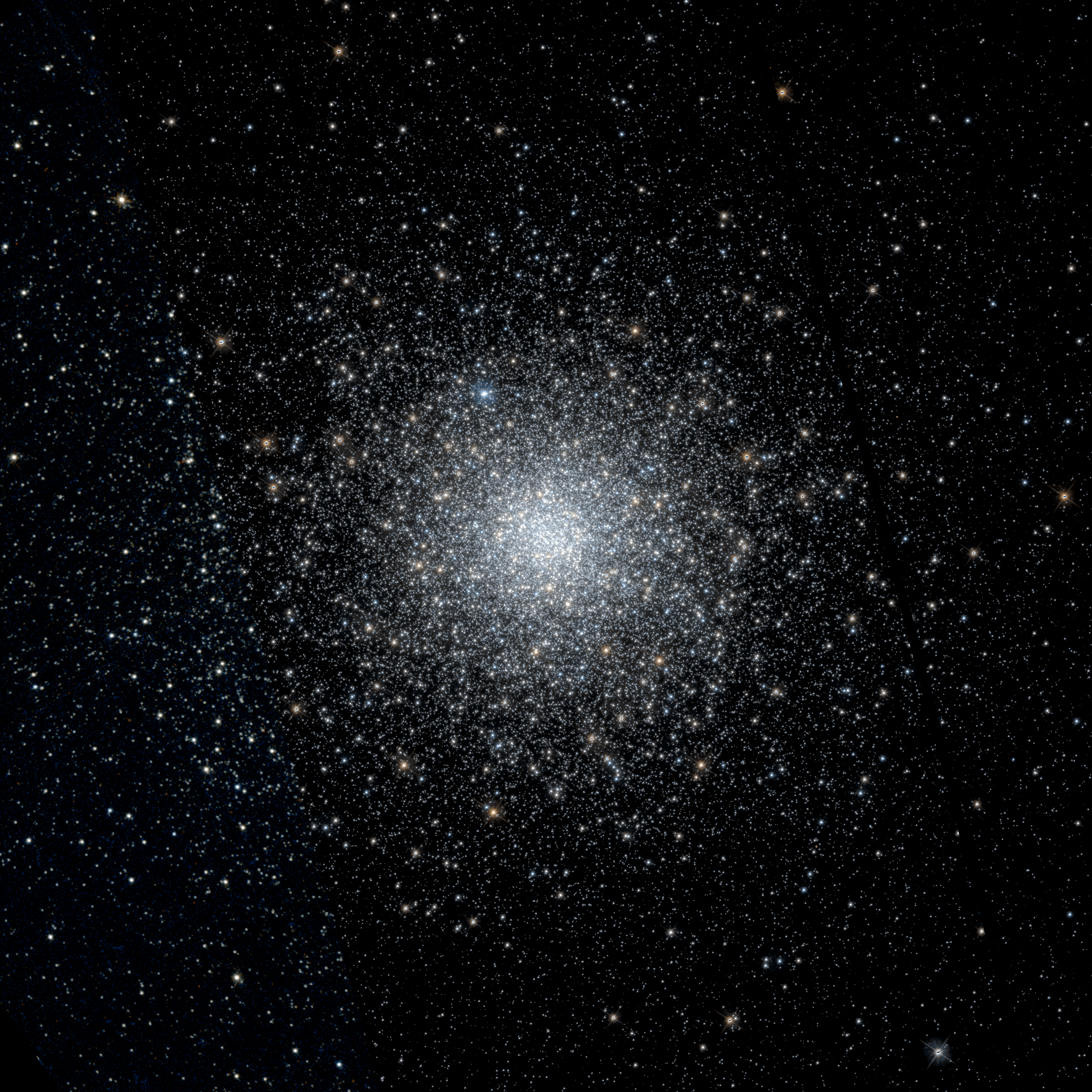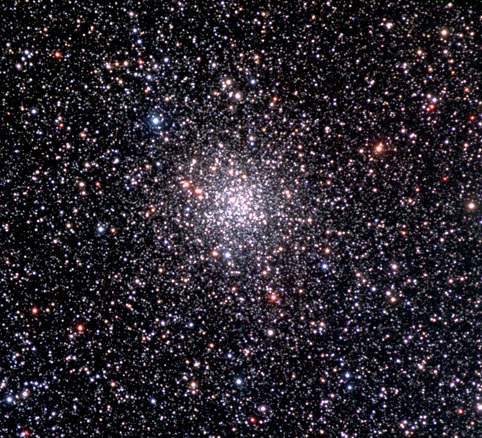|
NGC 6342
NGC 6342 is a globular cluster located in the constellation Ophiuchus. Its Shapley–Sawyer Concentration Class is IV, and it was discovered by the German-born British astronomer William Herschel on 28 May 1786. It is at a distance of 28,000 light years away from Earth. NGC 6342 is classified as metal-rich, yet has only one generation of stars. See also * List of NGC objects (6001–7000) * List of NGC objects * NGC 6366 * Messier 71 Messier 71 (also known as M71 or NGC 6838) is a globular cluster in the small northern constellation Sagitta. It was discovered by Philippe Loys de Chéseaux in 1745 and included by Charles Messier in his catalog of non-comet-like objects in 17 ... References External links * Globular clusters 6342 Ophiuchus {{Star-cluster-stub ... [...More Info...] [...Related Items...] OR: [Wikipedia] [Google] [Baidu] |
NGC 6342 Hst 11628 R555B438
NGC commonly refers to: * New General Catalogue of Nebulae and Clusters of Stars, a catalogue of deep sky objects in astronomy NGC may also refer to: Companies * NGC Corporation, name of US electric company Dynegy, Inc. from 1995 to 1998 * National Gas Company of Trinidad and Tobago, state-owned natural gas company in Trinidad and Tobago * National Grid plc, a former name of National Grid Electricity Transmission plc, the operator of the British electricity transmission system * Northrop Grumman Corporation, aerospace and defense conglomerate formed from the merger of Northrop Corporation and Grumman Corporation in 1994 * Numismatic Guaranty Corporation, coin certification company in the United States Other uses * National Gallery of Canada, art gallery founded in 1880 in Ottawa, Canada * National Geographic, documentary and reality television channel established in the United States in 2001 formerly called National Geographic Channel * Native Girls Code, US non-profit organisat ... [...More Info...] [...Related Items...] OR: [Wikipedia] [Google] [Baidu] |
Hubble Space Telescope
The Hubble Space Telescope (often referred to as HST or Hubble) is a space telescope that was launched into low Earth orbit in 1990 and remains in operation. It was not the first space telescope, but it is one of the largest and most versatile, renowned both as a vital research tool and as a public relations boon for astronomy. The Hubble telescope is named after astronomer Edwin Hubble and is one of NASA's Great Observatories. The Space Telescope Science Institute (STScI) selects Hubble's targets and processes the resulting data, while the Goddard Space Flight Center (GSFC) controls the spacecraft. Hubble features a mirror, and its five main instruments observe in the ultraviolet, visible, and near-infrared regions of the electromagnetic spectrum. Hubble's orbit outside the distortion of Earth's atmosphere allows it to capture extremely high-resolution images with substantially lower background light than ground-based telescopes. It has recorded some of the most detaile ... [...More Info...] [...Related Items...] OR: [Wikipedia] [Google] [Baidu] |
J2000
In astronomy, an epoch or reference epoch is a instant, moment in time used as a reference point for some time-varying astronomical quantity. It is useful for the celestial coordinates or orbital elements of a Astronomical object, celestial body, as they are subject to Perturbation (astronomy), perturbations and vary with time. These time-varying astronomical quantities might include, for example, the mean longitude or mean anomaly of a body, the node of its orbit relative to a reference plane, the direction of the apogee or Perihelion and aphelion, aphelion of its orbit, or the size of the major axis of its orbit. The main use of astronomical quantities specified in this way is to calculate other relevant parameters of motion, in order to predict future positions and velocities. The applied tools of the disciplines of celestial mechanics or its subfield orbital mechanics (for predicting orbital paths and positions for bodies in motion under the gravitational effects of other bodi ... [...More Info...] [...Related Items...] OR: [Wikipedia] [Google] [Baidu] |
Ophiuchus
Ophiuchus () is a large constellation straddling the celestial equator. Its name comes from the Ancient Greek (), meaning "serpent-bearer", and it is commonly represented as a man grasping a snake. The serpent is represented by the constellation Serpens. Ophiuchus was one of the 48 constellations listed by the 2nd-century astronomer Ptolemy, and it remains one of the 88 modern constellations. An old alternative name for the constellation was Serpentarius (). Location Ophiuchus lies between Aquila, Serpens, Scorpius, Sagittarius, and Hercules, northwest of the center of the Milky Way. The southern part lies between Scorpius to the west and Sagittarius to the east. In the northern hemisphere, it is best visible in summer. It is opposite of Orion. Ophiuchus is depicted as a man grasping a serpent; the interposition of his body divides the snake constellation Serpens into two parts, Serpens Caput and Serpens Cauda. Ophiuchus straddles the equator with the majority ... [...More Info...] [...Related Items...] OR: [Wikipedia] [Google] [Baidu] |
Globular Cluster
A globular cluster is a spheroidal conglomeration of stars. Globular clusters are bound together by gravity, with a higher concentration of stars towards their centers. They can contain anywhere from tens of thousands to many millions of member stars. Their name is derived from Latin (small sphere). Globular clusters are occasionally known simply as "globulars". Although one globular cluster, Omega Centauri, was observed in antiquity and long thought to be a star, recognition of the clusters' true nature came with the advent of telescopes in the 17th century. In early telescopic observations globular clusters appeared as fuzzy blobs, leading French astronomer Charles Messier to include many of them in his catalog of astronomical objects that he thought could be mistaken for comets. Using larger telescopes, 18th-century astronomers recognized that globular clusters are groups of many individual stars. Early in the 20th century the distribution of globular clusters in the sky w ... [...More Info...] [...Related Items...] OR: [Wikipedia] [Google] [Baidu] |
Shapley–Sawyer Concentration Class
The Shapley–Sawyer Concentration Class is a classification system on a scale of one to twelve using Roman numerals for globular clusters according to their concentration. The most highly concentrated clusters such as M75 are classified as Class I, with successively diminishing concentrations ranging to Class XII, such as Palomar 12. (The class is sometimes given with numbers lass 1–12rather than with Roman numerals.) History From 1927–1929, Harlow Shapley and Helen Sawyer Hogg Helen Battles Sawyer Hogg (August 1, 1905 – January 28, 1993) was an American-Canadian astronomer who pioneered research into globular clusters and variable stars. She was the first female president of several astronomical organizations and a ... began categorizing clusters according to the degree of concentration the system has toward the core using this scale. This became known as the ''Shapley–Sawyer Concentration Class''. Classes References Astronomical classification systems ... [...More Info...] [...Related Items...] OR: [Wikipedia] [Google] [Baidu] |
William Herschel
Frederick William Herschel (; german: Friedrich Wilhelm Herschel; 15 November 1738 – 25 August 1822) was a German-born British astronomer and composer. He frequently collaborated with his younger sister and fellow astronomer Caroline Herschel (1750–1848). Born in the Electorate of Hanover, William Herschel followed his father into the military band of Hanover, before emigrating to Great Britain in 1757 at the age of nineteen. Herschel constructed his first large telescope in 1774, after which he spent nine years carrying out sky surveys to investigate double stars. Herschel published catalogues of nebulae in 1802 (2,500 objects) and in 1820 (5,000 objects). The resolving power of the Herschel telescopes revealed that many objects called nebulae in the Messier catalogue were actually clusters of stars. On 13 March 1781 while making observations he made note of a new object in the constellation of Gemini. This would, after several weeks of verification and consultation ... [...More Info...] [...Related Items...] OR: [Wikipedia] [Google] [Baidu] |
List Of NGC Objects (6001–7000)
This is a list of NGC objects 6001–7000 from the New General Catalogue (NGC). The astronomical catalog An astronomical catalog or catalogue is a list or tabulation of astronomical objects, typically grouped together because they share a common type, morphology, origin, means of detection, or method of discovery. The oldest and largest are star c ...ue is composed mainly of star clusters, nebulae, and galaxies. Other objects in the catalogue can be found in the other subpages of the list of NGC objects. The constellation information in these tables is taken from ''The Complete New General Catalogue and Index Catalogue of Nebulae and Star Clusters by J. L. E. Dreyer'', which was accessed using the "VizieR Service". Galaxy types are identified using the ''NASA/IPAC Extragalactic Database''. The other data of these tables are from the SIMBAD Astronomical Database unless otherwise stated. 6001–6100 6101–6200 6201–6300 6301–6400 6401–6500 6501–6600 ... [...More Info...] [...Related Items...] OR: [Wikipedia] [Google] [Baidu] |
List Of NGC Objects
The following is a list of NGC objects, that is objects listed in the New General Catalogue (NGC). It is one of the largest comprehensive astronomical catalogues for deep sky objects such as star clusters, nebulae, and galaxies. * List of NGC objects (1–1000) * List of NGC objects (1001–2000) *List of NGC objects (2001–3000) * List of NGC objects (3001–4000) * List of NGC objects (4001–5000) *List of NGC objects (5001–6000) *List of NGC objects (6001–7000) * List of NGC objects (7001–7840) Superlative entries NGC objects of superlative significance include: * NGC 2573 - Polarissima Australis, the closest NGC object to the south celestial pole * NGC 3172 - Polarissima Borealis, the closest NGC object to the north celestial pole Stars Some objects originally thought to be deep sky objects and listed in the NGC have been subsequently shown to be ordinary stars, so their inclusion in the catalog is now considered erroneous. This list of stars is based on the 'NGC 2 ... [...More Info...] [...Related Items...] OR: [Wikipedia] [Google] [Baidu] |
NGC 6366
NGC 6366 is a globular cluster located in the constellation Ophiuchus. It is designated as XI in the galaxy morphological classification scheme and was discovered by the German astronomer Friedrich August Theodor Winnecke on 12 April 1860. It is at a distance of 11,700 light years away from earth. NGC 6366 is similar in composition to M 71 or NGC 6342. It is metal-rich for a globular cluster, and all of its stars appears to have formed in the same epoch. See also * List of NGC objects (6001–7000) * List of NGC objects The following is a list of NGC objects, that is objects listed in the New General Catalogue (NGC). It is one of the largest comprehensive astronomical catalogues for deep sky objects such as star clusters, nebulae, and galaxies. * List of NGC ... References External links * Globular clusters 6366 Ophiuchus (constellation) Astronomical objects discovered in 1860 {{Star-cluster-stub ... [...More Info...] [...Related Items...] OR: [Wikipedia] [Google] [Baidu] |
Messier 71
Messier 71 (also known as M71 or NGC 6838) is a globular cluster in the small northern constellation Sagitta. It was discovered by Philippe Loys de Chéseaux in 1745 and included by Charles Messier in his catalog of non-comet-like objects in 1780. It was also noted by Koehler at Dresden around 1775. This star cluster is about 13,000 light years away from Earth and spans . The irregular variable star '' Z Sagittae'' is a member. M71 was for many decades thought (until the 1970s) to be a densely packed open cluster and was classified as such by leading astronomers in the field of star cluster research due to its lacking a dense central compression, and to its stars having more "metals" than is usual for an ancient globular cluster; furthermore, it lacks the RR Lyrae "cluster" variable stars that are common in most globulars. However, modern photometric photometry has detected a short "horizontal branch" in the H-R diagram (chart of temperature versus luminosity) which is characte ... [...More Info...] [...Related Items...] OR: [Wikipedia] [Google] [Baidu] |
Globular Clusters
A globular cluster is a spheroidal conglomeration of stars. Globular clusters are bound together by gravity, with a higher concentration of stars towards their centers. They can contain anywhere from tens of thousands to many millions of member stars. Their name is derived from Latin (small sphere). Globular clusters are occasionally known simply as "globulars". Although one globular cluster, Omega Centauri, was observed in antiquity and long thought to be a star, recognition of the clusters' true nature came with the advent of telescopes in the 17th century. In early telescopic observations globular clusters appeared as fuzzy blobs, leading French astronomer Charles Messier to include many of them in his catalog of astronomical objects that he thought could be mistaken for comets. Using larger telescopes, 18th-century astronomers recognized that globular clusters are groups of many individual stars. Early in the 20th century the distribution of globular clusters in the sky wa ... [...More Info...] [...Related Items...] OR: [Wikipedia] [Google] [Baidu] |







